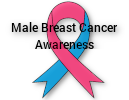Breast cancer is the second-deadliest cancer among American women. Other than adopting a healthier lifestyle, early detection with regular mammograms remains the single most effective way for combating the disease. Women diagnosed with breast cancer that has not spread outside the breast have a 99 percent survival rate. Steady declines in mortality among women since 1989 have been attributed to a combination of early detection and improvements in treatment.
Statistics
- In the U.S., one in eight women will be diagnosed with invasive breast cancer during her lifetime.
- In the U.S. in 2018, 266,120 women and 2,550 men are expected to be diagnosed with invasive breast cancer.
- In 2018, breast cancer is expected to claim the lives of 40,920 women and 480 men in the U.S.
- In Texas in 2018, an estimated 17,566 new cases of female and male breast cancer are expected, with 3,175 deaths.
Risk Factors
- Age: Most invasive breast cancers occur in women over age 55.
- Family History: Women with an immediate family member (mother, sister, daughter) who has had breast cancer are nearly twice as likely to develop the disease. Close male relatives with the disease also raises risk. If you have a family history of cancer, genetic testing may help determine risk.
- Diet and Exercise: Overweight and/or physically inactive women have a higher risk, especially after menopause.
- Breast Conditions: Women with dense breast tissue and some benign breast conditions are at higher risk.
- Menstrual Cycles: Starting menstruation early (before age 12) or completing menopause late (after age 55) raises risk.
- Radiation: Radiation to the chest for another cancer have a higher risk of breast cancer.
- DES Exposure: Women who were exposed or had mothers exposed to diethylstilbestrol have a slightly higher risk.
Symptoms and Signs
Women are encouraged to consult their physician immediately for evaluation if any of the following signs and symptoms are present. The signs for breast cancer are not the same for all women, and some women show no signs in early stages.
- A lump in the breast, under the arm or around collarbone
- Change in breast size or shape
- Thickening of breast or underarm
- Nipple retraction or nipple discharge
- Dimpled skin or skin resembling orange peel
- Tenderness or pain in breast or nipple
- Irritation, redness, scaliness, or swelling on the breast, nipple, or skin near the nipple
Prevention
Breast cancer cannot be completely prevented, but women can take steps to decrease risk and/or improve early detection of the disease. Screening recommendations are for women with average risk. It is important to discuss with a physician your individual risk factors, including age, menopausal status, and family history to determine your screening needs.
- Screening
- Women should understand their risk as some women with a family history of breast cancer or known to be of higher risk should start screening early and can take other preventative measures.
- Women should check their breasts monthly. Report any changes to a physician immediately.
- Women in their 20s and 30s should have a clinical breast exam every three years.
- Women in their 30s should discuss their breast cancer risk level with a physician to determine the most appropriate cancer screening options, including mammograms and MRI screenings.
- Women age 40 and older should discuss individual risk factors with a physician to determine recommended timing and most appropriate screenings, including annual mammogram, annual clinical breast exam, and annual MRI screening.
- Women age 50 and older should have a mammogram and a clinical breast exam at least every two years after discussion with her physician, and if recommended by a physician, an annual MRI screening.
- Lifestyle
- Regular exercise, limiting alcohol intake, and maintaining a healthy body weight may reduce the risk of breast cancer.
- Higher Risk
- Women with a family history of breast cancer should discuss genetic testing with their physicians. If genetic tests indicate a woman has a genetic disorder that will increase her risk of breast cancer, like BRCA, there are a number of risk reduction strategies to discuss with her physician.
- Women with a first degree relative who had breast cancer before age 50 should begin receiving mammograms 10 years before reaching that relative’s age at diagnosis.
Treatment Options
Anyone with breast cancer should consult with a medical oncologist to determine their specific treatment needs. Treatment options can include surgery, radiation therapy, chemotherapy, proton therapy, targeted therapy, bone-modifying therapy, or hormone therapy. A combination of treatments may be used to provide the best chance of disease control.
Sources: American Cancer Society, American Society of Clinical Oncology, National Cancer Institute, and Texas Cancer Registry

 Print-Friendly PDF
Print-Friendly PDF